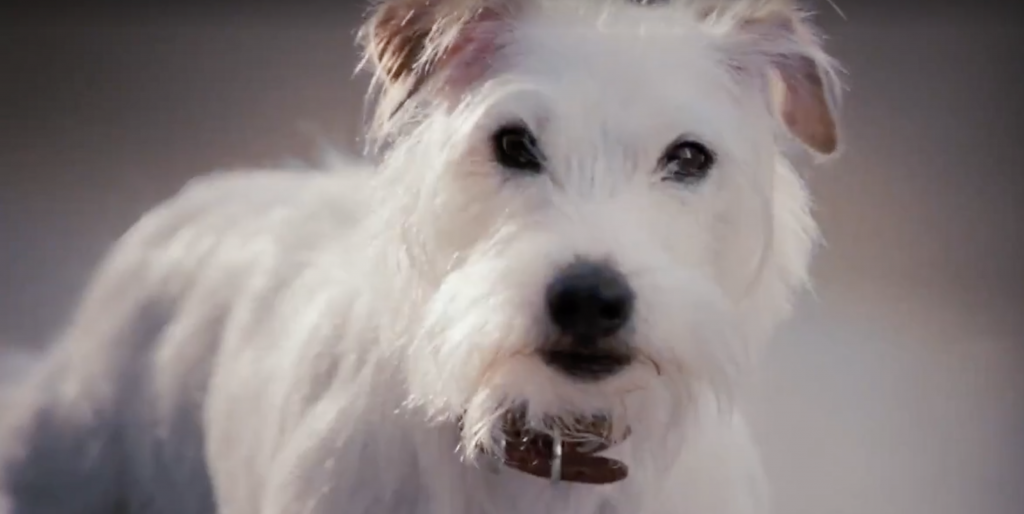
Animals, a cutesy love story and the rise of underdogs… literally. What more could you want in a film? Well, ‘Hotel for Dogs’ (Thor Freudenthal/ 2009) covers a multitude of heart-wrenching topics which are compacted within a fun-loving Nickelodeon film. W.C. Fields stated ‘never work with children or animals’;[1] Thor Freudenthal the director ignores this classic phrase as he commits to undertaking both, as the film is solely focused on a tale of ‘man’s best friend’, the dog. The film follows a pair of siblings, Andi (Emma Roberts) and her younger brother Bruce Walker (Jake T Austin), who are on to their fifth foster home after leaving their previous family placements that proved to be too difficult. Their social worker Burney fights for the children’s’ happiness as he attempts to find them their forever home. In the meantime, they are stuck with Lois and Carl who are extremely strict and heavily against animals, due to their small flat accommodating their multitude of musical instruments. However, the siblings stumble across an abandoned hotel which they transform into the Hotel for Dogs. Using Bruce’s engineering skills, they create a Doctor Seuss-eques utopia for their collection of stray dogs and prevent the animal outcasts being taken to the villainous pound.
This uplifting family comedy film was based on a 1971 novel, ‘Hotel for Dogs’ written by Lois Duncan (Lois Duncan /1971) was adapted for the film. Director Freudenthal captures a vast number of serious topics within the film’s narrative such as orphans, child neglect, animal cruelty, the displacement of dogs and the urban management of stray animals. Now, knowing that this is a children’s film it seems unthinkable that these topics could come about in a Nickelodeon production normally associated with escapist content, but masked beneath humorous heart-warming relationships the more challenging themes in the film fit perfectly well, yet convey powerful messages about these social issues for the intended audience. Human-animal relationships are transformed in regard to different character development and often strangers with an initial negative outlook toward strays change their mind; whereas for Andi and Bruce these displaced dogs become the family they never had. The film captures the harsh realities of the overpopulation of older and unwanted dogs in global cities due to the stigma of people only wanting to own a puppy while old or damaged dogs are looked down upon due to the notion of not looking as ‘cute’. However, the film also mirrors the human experience and the disadvantages of ageing, as Andi and Bruce are effectively in the same situation as the dogs, and struggle to find suitable accommodation as they become older children and are regarded as less cute and more troublesome. The film contains a multitude of different cinematic qualities, such as perspective shots from the dogs, animal close-ups, slow-motion shots and non-diegetic music playing throughout the film. The camera angles within the film serve to capture the animal’s perspectives and point of view as we can see exactly what they are seeing, how they encounter the world which establishes audience empathy, while the use of non-diegetic music reinforces and reminds the audience of the fun-loving family genre.
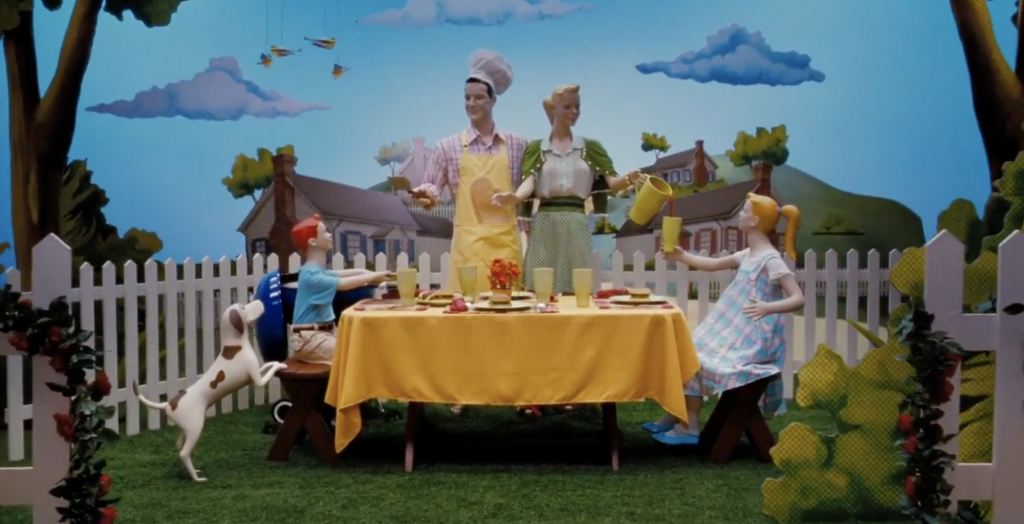
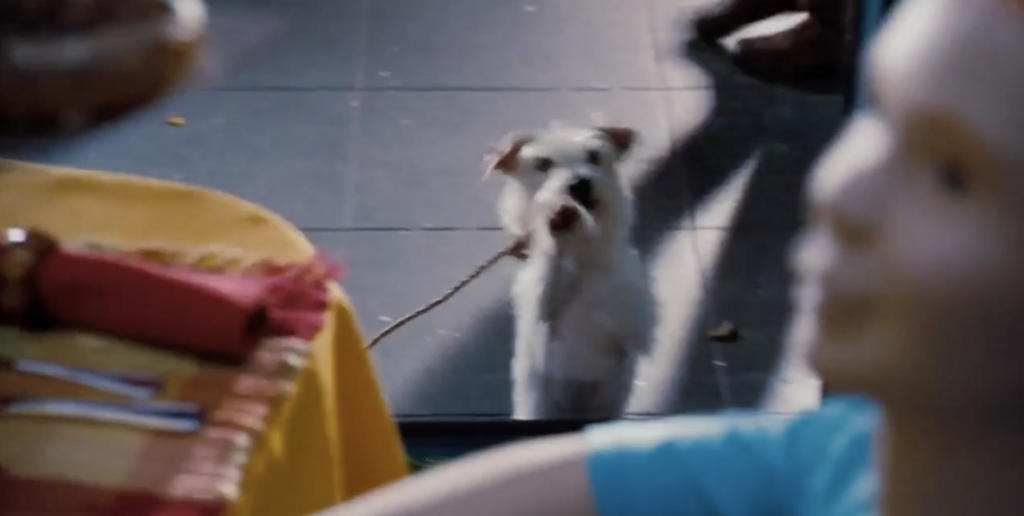
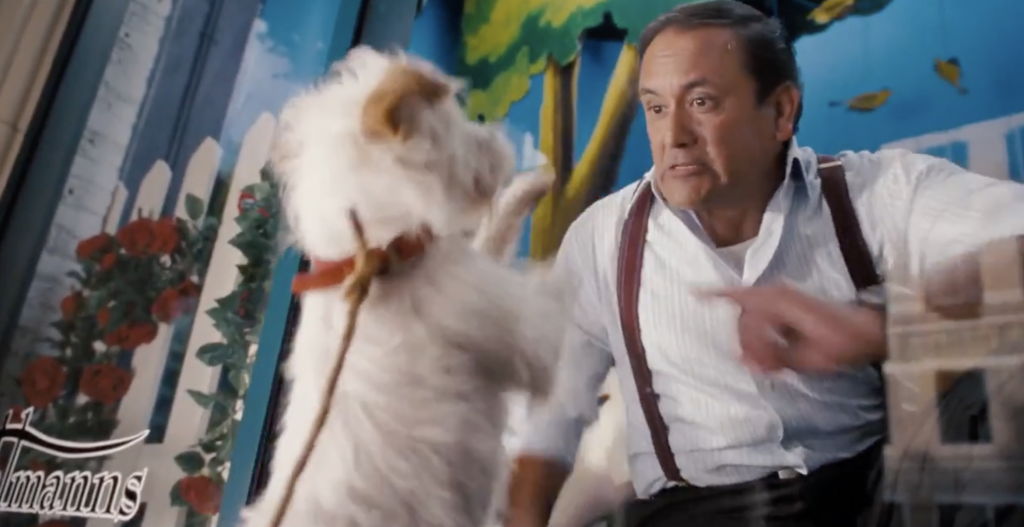
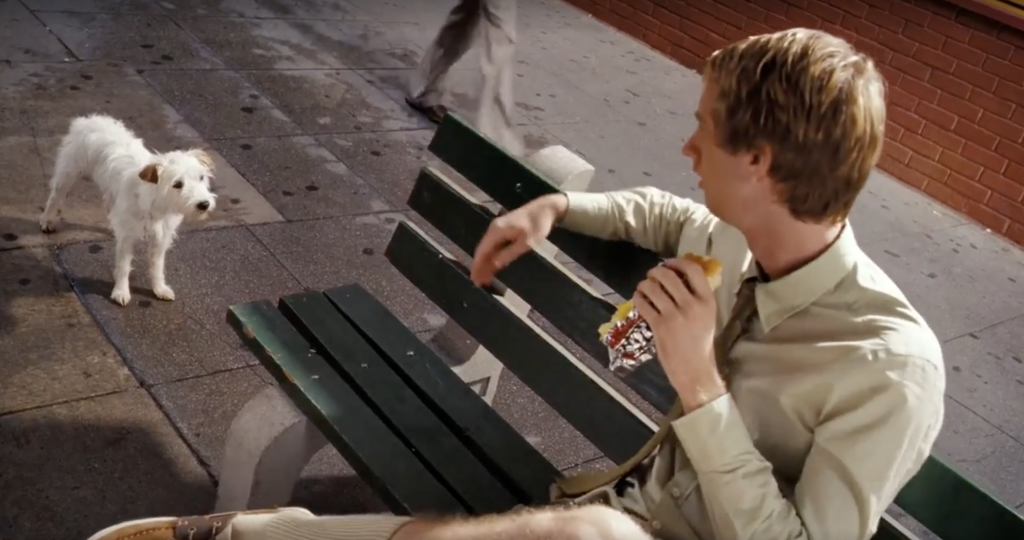
We are first introduced to Friday, a small white Jack Russell terrier and the leader of the pack, as he is peering into a window of a shop gazing at a mechanical montage of the typical American household, containing the white picket fence, barbeques and the loving family unit with their well-behaved dog wagging its tail. Friday begins to scratch on the window as he sees a plastic burger patty being flipped. In response, he is met with an aggravated shop owner who repetitively bangs on the window to shoo him away. A close-up shot of Friday’s face conveys his fixation on food, so he proceeds to look for another source of nutrition and he begins to trot over to the bin as that is the nearest option for food scavenging. After discovering there is nothing of interest there to eat, he uses his best dog asset, his nose. As non-diegetic spontaneous music begins to play, the camera pans directly to his twitching nose and we flash forward to a black-and-white image of a man eating a hotdog, with the hotdog illuminated in yellow and red colours. Friday slips out of his collar in a hunt for the prized hotdog that he can smell. The film angle changes to Friday’s perspective of walking through the city streets at small dog height, using an unsteady jittery low shot capturing his view of human feet surrounding him. He runs through the street dodging human legs and passing some unpleasant smells as he whines and sneezes passing a man with breath spray and the odour of a sweaty builder’s behind. Friday finally reaches the object of desire, the hot dog, and is soon met with teasing by the owner of the food item, who dangles the hot dog just above his head so he can’t reach it. Luckily for Friday, a car drives past and soaks the cruel man upon which Friday jumps up and grabs the rest of the hotdog out of his hand. These two interactions between man and dog highlight the existence of negative human-animal relationships, as the shopkeeper doesn’t want his shop front to be tampered with or be looked down upon due to the dog scratching on the window, despite the window display advertisement ironically featuring the symbiotic human relationship with dogs. Whereas, the man-eating the hotdog wants to taunt the dog for his entertainment and brushes him away as Friday looks like a stray with no collar. Here, the human animal relationship relies on a key form of connection between the dog and its owner in the right domestic context.
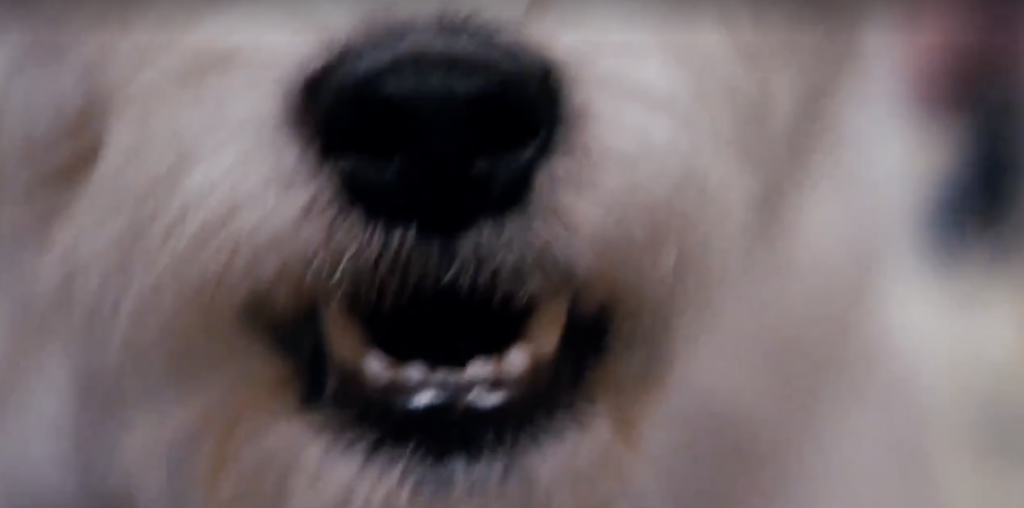
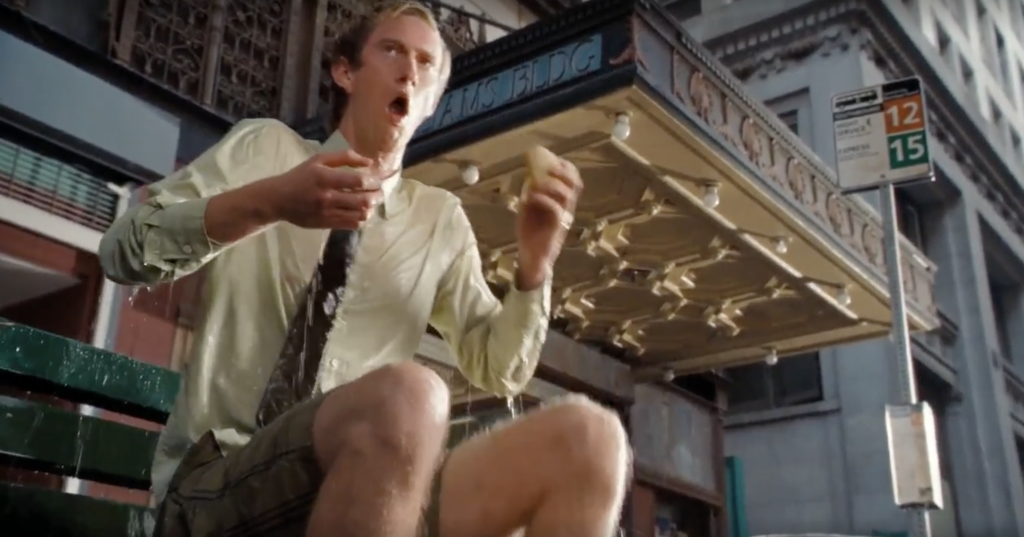
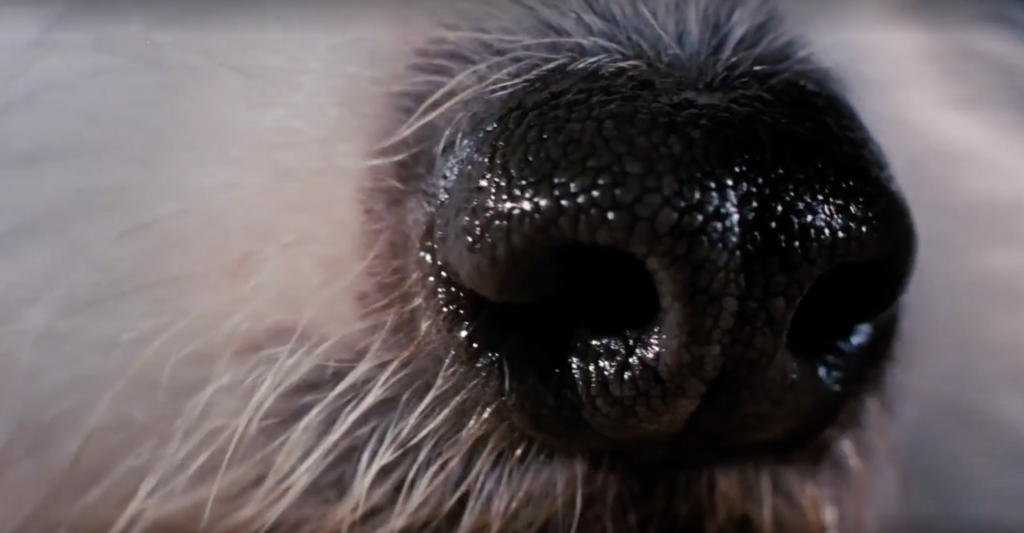
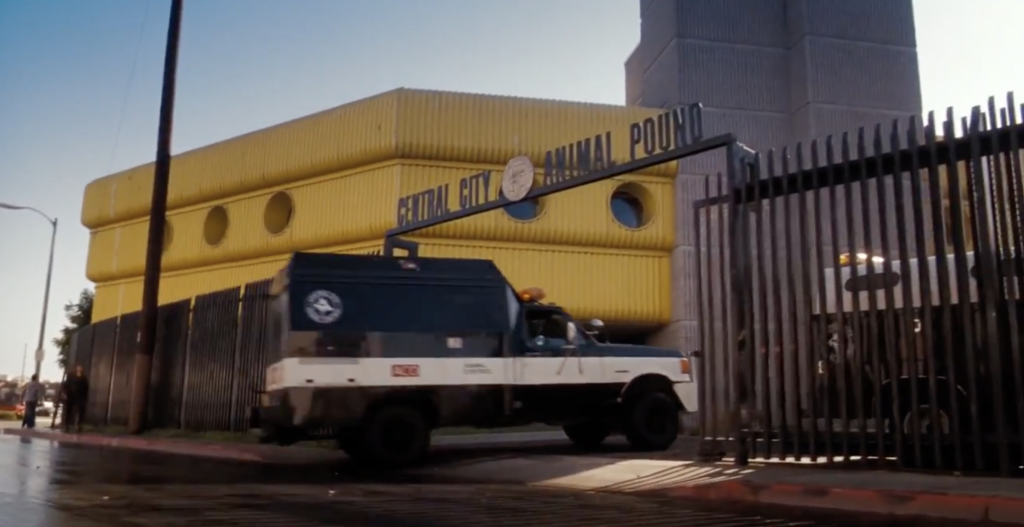
Another key factor within the film is the contrasting and pragmatic relationship between the dogs and the workers at the pound, as for them this is just a job. However, they treat stray and lost animals as almost disposable which is a harsh reality explored within the film’s narrative and adds tension to the storyline as the dogs on the street are at risk of being hunted by the predators of the pound. As Friday was out alone for a day walking around the city streets he soon gets caught by the pound workers and consequently Andi and Bruce are extremely desperate to find and retrieve him. The shot begins with the pound, non-diegetic ominous music as the pound van arrives using an overhead shot which captures the jail like sign on the vehicle which states, ‘Central City Animal Pound.’ Next, the shot changes to a scene inside the pound where the lighting dramatically changes to an unsettling clinical blue glow, with close up shots of imprisoned dogs panting and paws hanging out of the cage and further diegetic sounds of dogs whining and crying as they scratch the bars of their cages. This emotive segment is reinforced with a close-up of one husky and a boxer dog anthropomorphically looking sad and disheartened; conveyed in the hyper fixation on their facial features reflecting a human-like resemblance. As Andi and Bruce peer through the small glass window in the door a ragged golden retriever is being aggressively dragged away attached to a metal stick with a cord at the end of it. As both kids look horrified and shocked conveyed by a close-up of Bruce’s face as he soon realises that Friday is captured somewhere in this dire setting. One of the workers comes out with Friday in his hands, and as the kids seem delighted to be nearly reunited with their dog the man mouths to them “Is this your dog?” to which they resoundingly reply “Yes!” whereupon he chucks the dog into the cage like a toy. This horrific montage presents the human animal relationship dependent on a power complex between the workers and the animals they find and treat as redundant objects to be cleaned away. The sadness of the scene is heightened by the fact that animals are vulnerable and unable to fend for themselves or determine their own fate as most of them have disposed of by their owners. The workers don’t see the dogs, or the children in a personable way they are seen as a hinderance and treated like disposable creatures. This sadly reflects reality in our day-to-day life as “approximately 2.7 million dogs and cats are killed every year because shelters are too full and there aren’t enough adoptive homes”[2] which is mirrored within the film as we see Bruce look at a sign on the pound door which used to say “Dogs can stay for a week” but is now amended to “seventy-two hours”. This temporal control of animal’s lives does not justify the treatment of the animals within in the scene, but it captures a greater issue in terms of how the workers in the pound systemically deal with the animals due to the overwhelming influx of animals they have to look after.
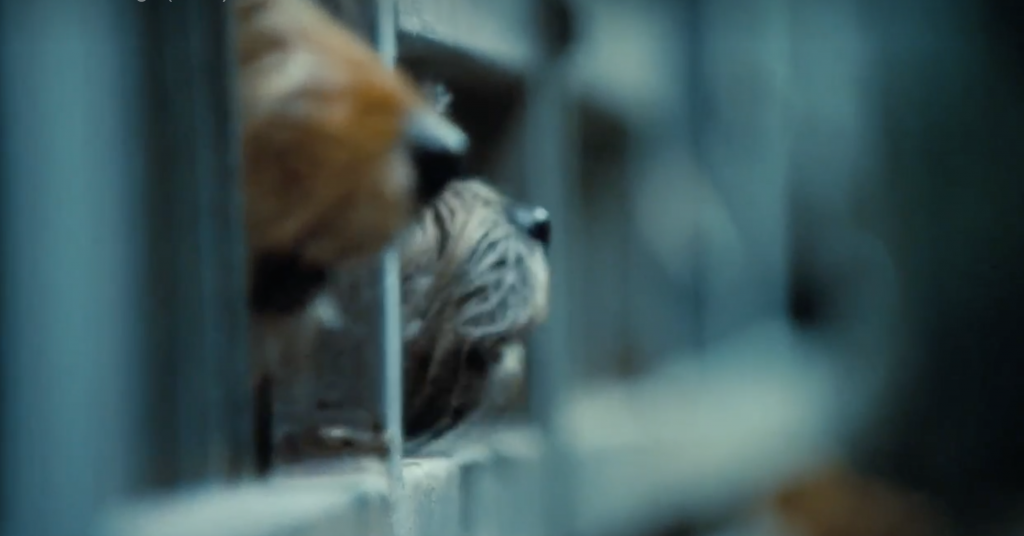
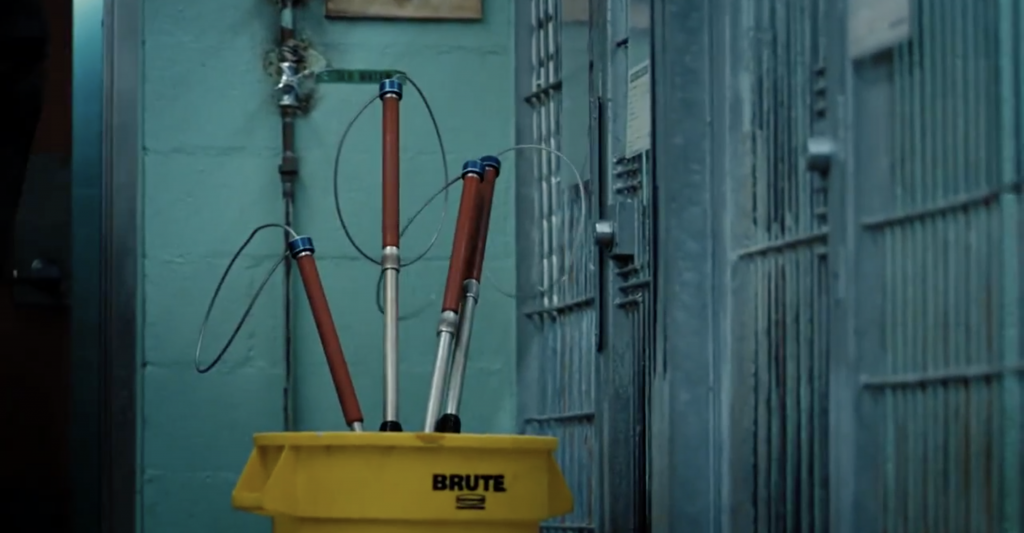
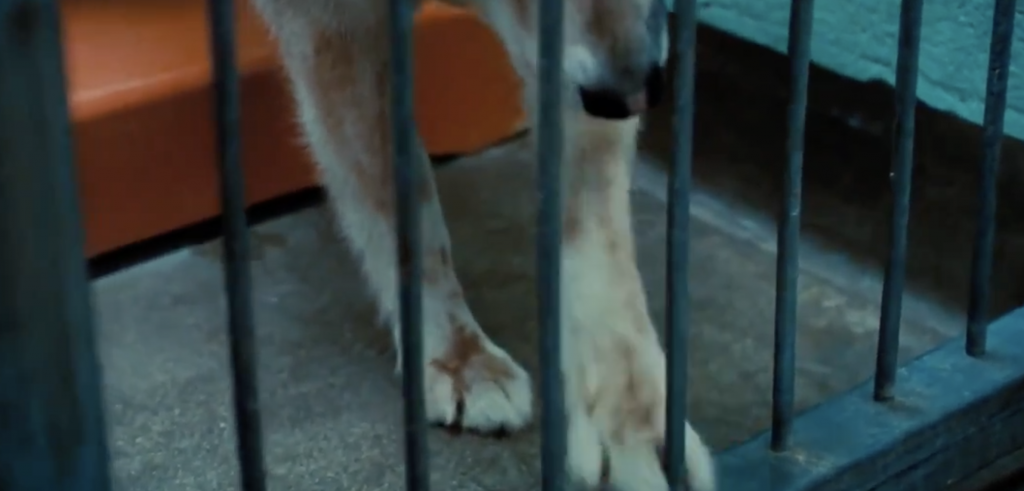
In a scene right at the end of the film Andi, Bruce and their friends attempt to free the dogs from the pound as their time is running out before they are euthanized having been there for nearly seventy-two hours. As they are 5 minutes away from the county line, the dogs change direction to run to what they see as ‘home’ which is the dog hotel that Andi and Bruce created as a safe refuge for them all. As the plethora of dogs run through the streets of New York the ensuing commotion results in the police and animal control being called and the children being arrested. At this point in the scene, Burney stands at the top of the steps of the derelict hotel and gathers everyone’s attention by introducing the dogs by name in Hotel’s for Dogs book, while they appear in sequence as their name is called. He begins to deliver a monologue in which he says “No one was turned away when they needed a home” and continues to praise Andi and Bruce’s determination and drive to look after the animals as he explains “most people would have given up”. This heart-warming, rhetorical closing sequences of the film demonstrates the relationship between animal and human to be far deeper as both siblings found salvation in the relationship with these animals, as the animals did in them because they had all been rejected by adults. Animal and human relationships within this film depict not only how people deal with difference be that animals versus humans; orphans versus children with a family home, but also the special friendship bonds that can develop from shared experiences offering stability and based on trust. It also highlights the virtue of perseverance in the face of unequal power relations and encourages young people to stand up for what they believe to be true and not to be afraid of challenging the prescribed system in the name of justice when people and animals are being subjected to unfair treatment and alienation. The final scenes of the film are framed as a happy ever after resolution. The Hotel for Dogs undergoes a refurbishment and becomes a reality, operating as an inclusive leisure destination for all dogs, where every canine need is catered for in a luxury environment. While Andi and Bruce, and Friday are officially adopted by Burney and his wife and create their own domestic harmony.
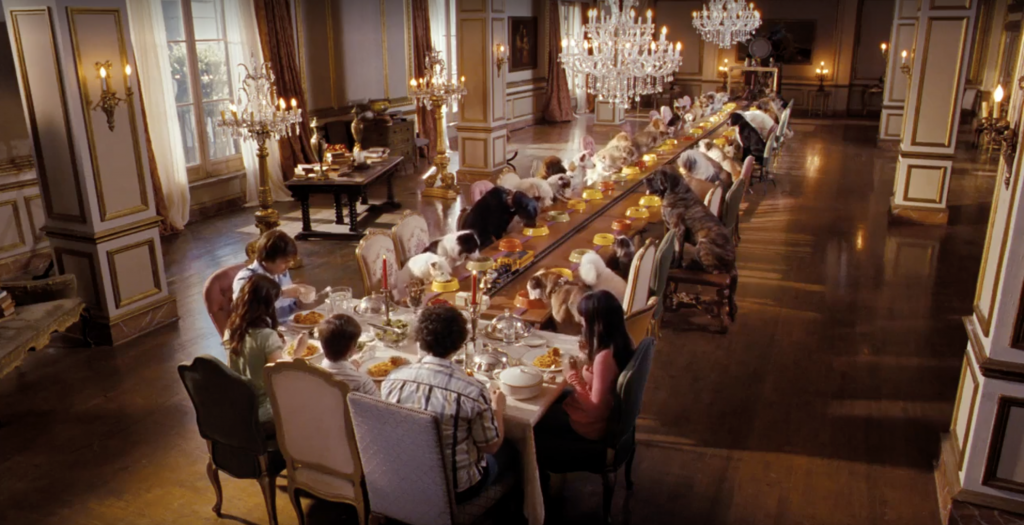
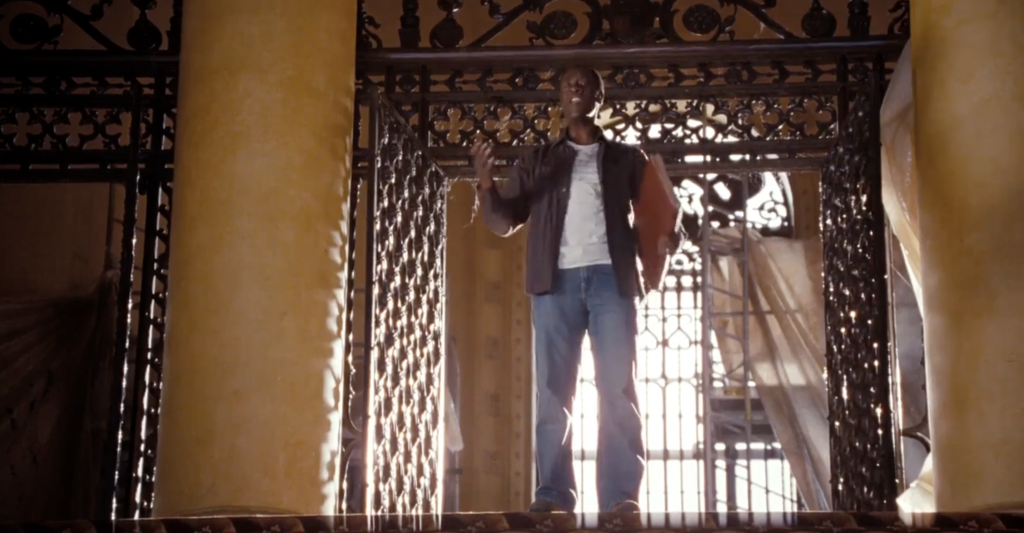
The human-animal relationship at the core of the narrative in Hotel for Dog’s carries multiple overt and subliminal meanings, as we see the animal and human situational relationships mirroring each other and the security they both create for each other given the parity of their lives and their experience of rejection because of their age or disposition. The deeper issues of abandonment and negative, inhumane treatment of vulnerable animal and human alike is tackled at the core of the film’s narrative as a moral tale. As both the children and dogs face rejection and uncertainty throughout their lives, they demonstrate the resolve to survive and fight for the life that they deserve. They all attain a secure life in the end, the ultimate reward of the American dream, because of the compassion the sibling protagonists showed for other living creatures resulting in finding owners to cherish their dogs and a secure and loving new family unit, complete with a small white dog wagging its tail.
Bibliography –
11 facts about animal homelessness. DoSomething.org. (n.d.).
Freudenthal T. Hotel for Dogs. Nickelodeon Movies. (2009)
Duncan L. Hotel for Dogs. 1971
Wetherall, J. (2020, September 4). Never work with children or animals… Wetherall’s. Retrieved January 20, 2023.
[1] Wetherall, J. (2020, September 4). Never work with children or animals… Wetherall’s. Retrieved January 20, 2023.
[2] 11 facts about animal homelessness. DoSomething.org. (n.d.).